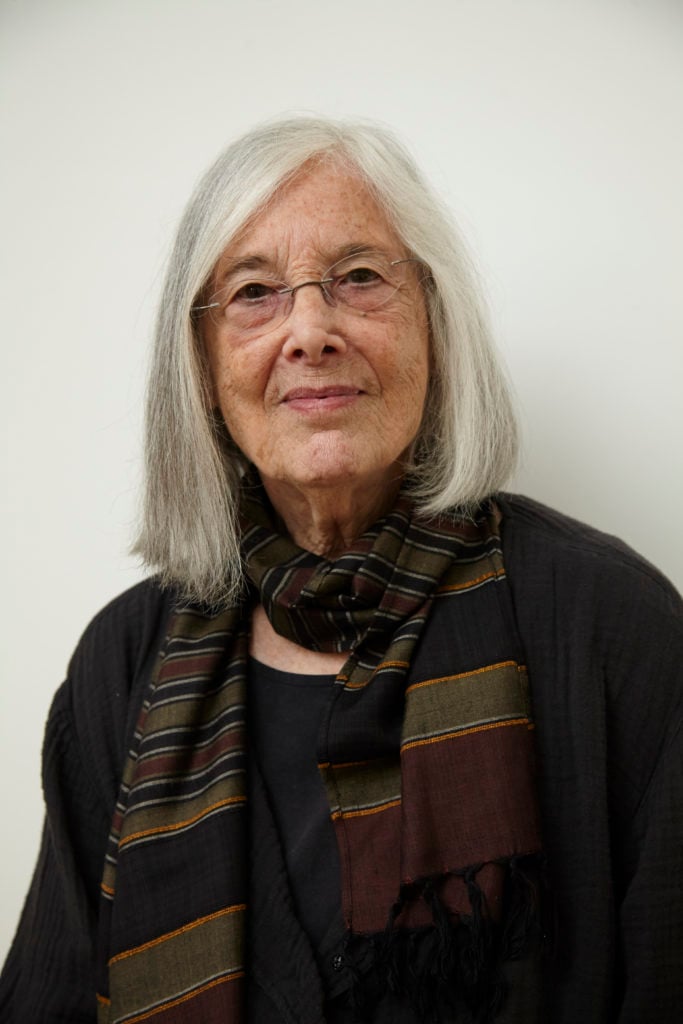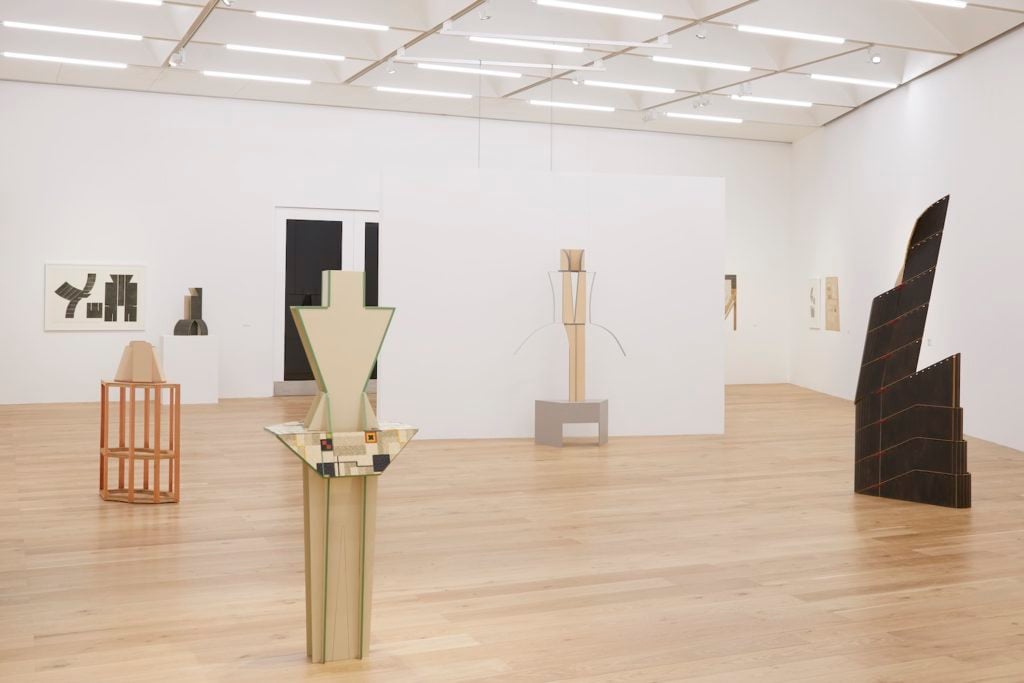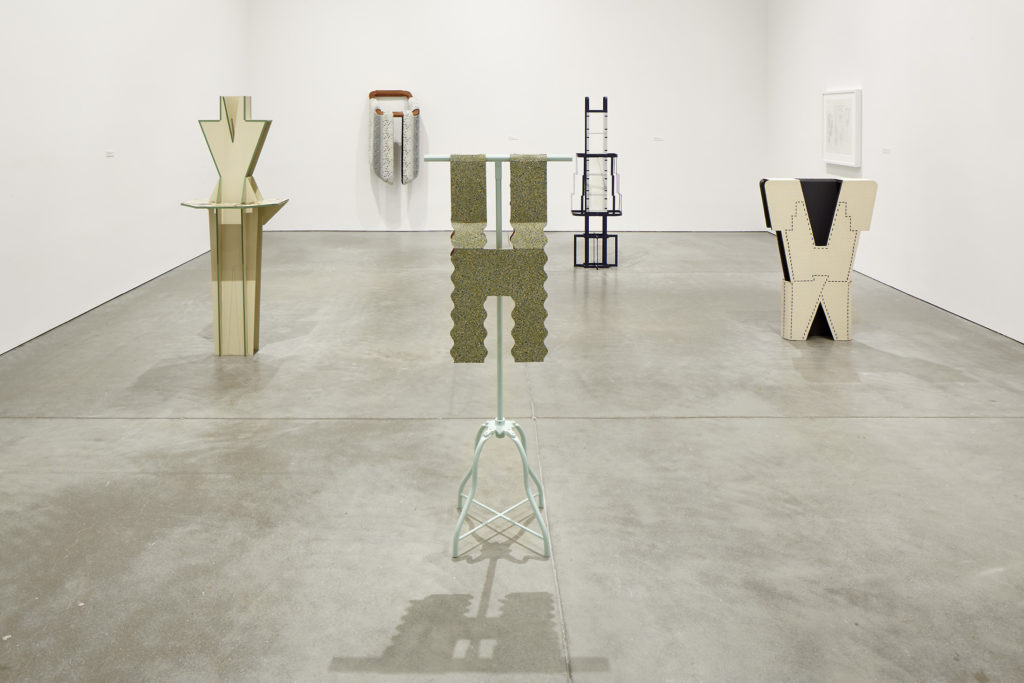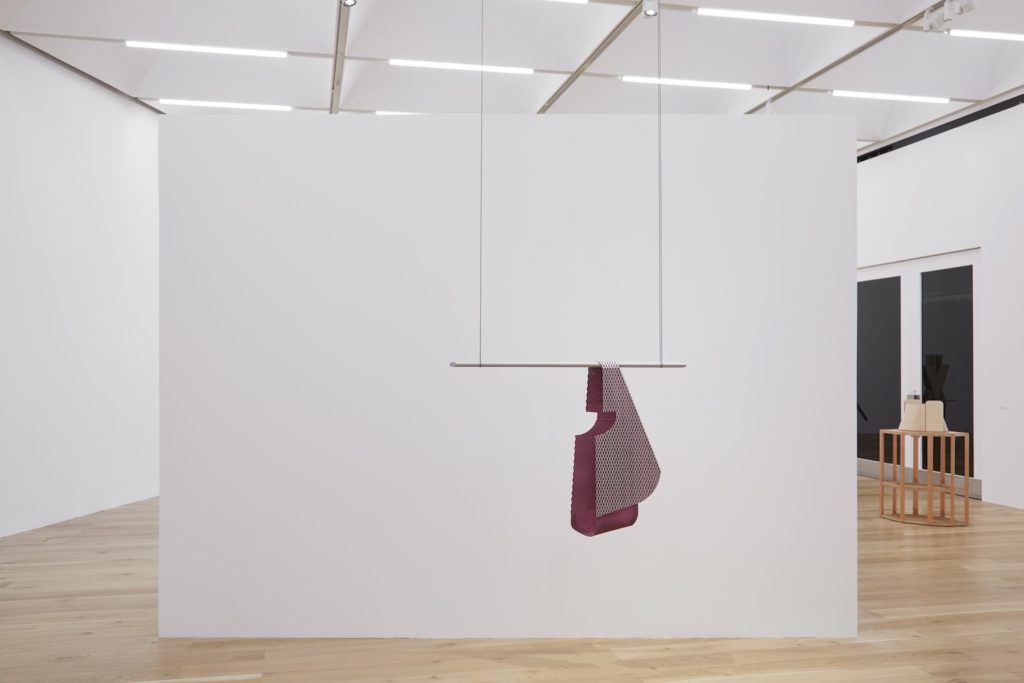People
‘I’m Constantly Learning’: How 85-Year-Old Sculptor Diane Simpson Kept Going Until the Art World Finally Caught Up With Her
The artist's first European institutional show is on view now at Nottingham Contemporary.

The artist's first European institutional show is on view now at Nottingham Contemporary.

Chloe Stead

Over the past decade, the trope of the “rediscovered” female artist has become so widespread that it’s even spawned its own acronym. Known as the OWAs (older women artists), this disparate group of female creators—Lubaina Himid, Phyllida Barlow, Sheila Hicks, Carmen Herrera, to name only a few—are linked less by their practices than by their gender and delayed success.
It would seem that 85-year-old Diane Simpson, who until recently was barely known outside of her native Chicago, is set to join these ranks. At one point making so little money as an artist that the IRS became suspicious she’d been lying on her tax returns, Simpson has recently undergone a reappraisal, with prices for her sculptures now reaching upwards of £70,000 ($90,000) and older pieces, significantly more.
Not long after her inclusion in last year’s Whitney Biennial—where she was the oldest artist in a show dominated by millennials—Simpson has also just opened a solo exhibition at Nottingham Contemporary, her first institutional show in Europe. Featuring extemporary pieces from each of her major series, “Diane Simpson: Sculptures, Drawings, Prints 1976–2014” is on view through May 4, and serves as a tribute to the elaborate and idiosyncratic working method Simpson has developed over the past 38 years.

Diane Simpson: Sculpture, “Drawing, Prints 1976–2014,” 2020. Installation view of Nottingham Contemporary. Photo Stuart Whipps.
Formally trained in drawing and painting at the School of the Art Institute of Chicago in the mid-to-late 1970s, Simpson had an artistic breakthrough when a tutor encouraged her to turn the isometric drawings she’d been making into three-dimensional objects. Beginning with corrugated cardboard and eventually moving on to using MDF, Simpson interlocked panels to replicate the 45-degree angles of the original gridded paper drawings, creating sculptures with a skewed perspective that, when seen in person, often appear structurally unfeasible.
“There is something [about Simpson’s work] that doesn’t really translate in images or reproductions,” explains Nicole Yip, the chief curator at Nottingham Contemporary. “What struck me most about the sculptures was just how terrifically strange they are in the way they occupy space.”
I meet Simpson in the museum’s café a few hours before the opening. Smartly dressed and remarkably polite, she tells me she’s thrilled to be showing outside the US in what is only her second museum solo show, and “very happy” with Yip’s selections, the result of a trip the curator made to Simpson’s Chicago home last year.

Installation view from “Diane Simpson” at the Institute for Contemporary Art Boston in 2016.
Simpson has lived in the Midwestern city her whole life—a factor, she admits, which has undoubtedly had a negative effect on her career. “When I graduated, this was the time where you just had to go to New York, you couldn’t possibly make it any other way, but I don’t think I had the nerve,” she says. “But not only that, I got married young and started a family very fast, so I didn’t finish school and had to go back many years later to graduate.”
Although she had some early signs of success—shortly after finishing her studies, she was given a solo show with legendary art dealer Phyllis Kind, where she debuted sculptures based on Samurai armor—nothing stuck. Simpson bounced between galleries, sometimes leaving because she was unhappy and other times finding herself adrift when a gallery would shut down. Still, she never stopped making art and, finally, she was picked up in 2010 by Chicago-based dealer Corbett vs. Dempsey after the founders saw her 30-year retrospective at the Chicago Cultural Center.
It marked a change in fortune for the artist that would prove enduring. She went on to have a well-received solo exhibition with New York gallery JTT in 2013 and a two-person show at London’s Herald Street in 2015, which both resulted in Simpson joining the galleries’ rosters.

Diane Simpson: Sculpture, “Drawing, Prints 1976–2014,” 2020. Installation view of Nottingham Contemporary. Photo Stuart Whipps.
But Simpson doesn’t seem to mind her later-in-life success, although she understands that many in her position might not have stuck with it for so long. “I had a lucky situation,” she says. “My husband, I should say, was very encouraging. I realize how tough it is. For so many young artists, it’s really difficult to do their art and also earn a living and they have to either spend a lot of time teaching or have another job.”
The spotlight on Simpson’s work comes at a time when the art world is taking a renewed interest not only in the Chicago Imagists, many of whom she studied alongside her at the Chicago Institute of Art, but also in older women artists in general who may have been structurally shut out of the art market because of their gender.
Simpson says she was always on the periphery of Imagists and was never included in those early Imagist exhibitions at Hyde Park Art Center in Chicago. “I think for the most part, stylistically and in regard to subject matter, my work was very different from that of the Imagists,” she says. “I feel closest to [Chicago Imagist] Christina Ramberg—her imagery and interests are similar to mine, both being drawn to clothing and the body.”

Diane Simpson: Sculpture, “Drawing, Prints 1976–2014,” 2020. Installation view of Nottingham Contemporary. Photo Stuart Whipps.
Indeed, there are certainly similarities between the two: Ramberg, like Simpson, made detailed preparatory drawings for her work based on divergent source material, and, like the late artist, Simpson doesn’t see her practice as overtly feminist, although she accepts that her way of working is affected by her experience “as a woman and as a mother.” If she mainly uses female garments as source material, she says, it’s only because it’s more interesting than what men traditionally wear, rather than to serve “any political agenda.” Simpson was included in an exhibition on Ramberg at KW Institute for Contemporary Art in Berlin that looked at her influence on and discourses with her contemporaries.
One gets the impression that what excites Simpson most is the physical act of making work, which she still does by hand in her garage studio, an intense and detailed process that, from start to finish, takes up to three months for each object. “Even if I did want to have things fabricated, it’s just something that I couldn’t preplan,” she says. “Everything is self-taught, I’ve never really had a sculpture class, and so I’m constantly learning new techniques on my own.”
Ultimately, it’s this drive to test herself and her abilities that has kept Simpson going over the years. “I just had to do it,” she says with a chuckle. “Maybe I felt that I couldn’t do anything else well.”
“Diane Simpson: Sculpture, Drawing, Prints 1976–2014” is on view until May 3, 2020 at Nottingham Contemporary.